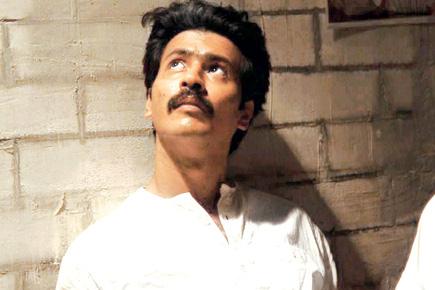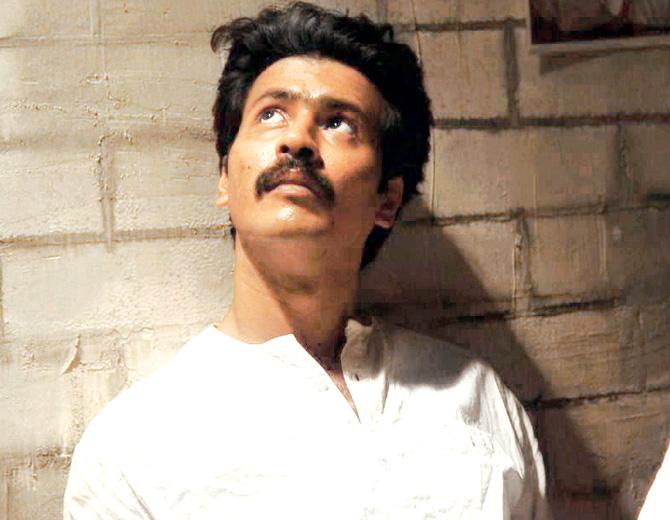On August 15, 2004, a man was hanged in Kolkata for rape and murder; last Friday, a Bengali film brilliantly reopened that case


Arindam Sil's investigative feature Dhananjoy released in Kolkata last Friday
ADVERTISEMENT
 I distinctly remember sitting with a notepad on a chai ‘tapri’ on August 15, 2004, casually observing a dozen people max, singing ‘Amra korbo joy’(‘We shall overcome’), outside the Alipore Jail in Kolkata, before the few TV news channels’ cameras that existed back then.
I distinctly remember sitting with a notepad on a chai ‘tapri’ on August 15, 2004, casually observing a dozen people max, singing ‘Amra korbo joy’(‘We shall overcome’), outside the Alipore Jail in Kolkata, before the few TV news channels’ cameras that existed back then.
This coverage was going live on national TV. It suddenly began to rain. The small crowd that had come out to protest the execution of one Dhananjoy Chatterjee — first person to be hanged by the state in over half a decade — suddenly dispersed. All of them had umbrellas. None of them returned. The channels probably moved on to other stories.
This was the actual face of arty activism, before social-media RT activism took over few years later. Honestly, while I’d gone down to Kolkata primarily to capture the night before Dhananjoy died — too busy paying off cops for details (of what he ate, said, etc), trying to interview the old hangman Nata Mullick — no one really knew or cared much about why this particular case had seriously divided Kolkata. One assumed the debate was over capital punishment per se—whether murder, ordered by a court, or a criminal, isn’t murder still, regardless.
The poor, former security-guard Dhananjoy had already served 14 years in prison for allegedly raping, killing an 18-year-old schoolgirl Hetal Parekh in her posh apartment in March, 1990. The case had gone through three courts. There was intense media trial to top that. Bengal’s CM Buddhadeb Bhattacharya’s wife had stood at one end, among others, baying for Dhananjoy’s blood.
The logic for the “rarest of rare cases” — which is when courts order an execution—was that this was a security guard, entrusted to protect, who had turned into the murderer instead (the same logic applied to Indira Gandhi’s assassins). The victim was nearly a minor. An example needed to be set. And there was enough evidence to nail the suspect.
It’s been exactly 13 years since. And then you patiently watch Arindam Sil’s investigative feature Dhananjoy, that released in Kolkata theatres last Friday, and you figure how the case, like the film, remains a landmark one for more reasons than meets the eye.
Through impeccable research, Sil’s court-room drama proves that the timelines in the Dhananjoy case simply don’t match. They never did. Neither do testimonies — the prime witness himself feigns ignorance. A motive cannot be properly established. Furthermore, the conviction was for rape and murder, while it’s seemingly clear that there was no rape, and the evidences against the supposedly obvious murderer could easily have been planted. In fact, they probably were. Whether or not you agree with the film, you can tell, there is enough room for doubt. And Dhananjoy ought to have been the beneficiary of it. He wasn’t. He was hanged — chiefly because he couldn’t conclusively prove his alibi.
The beauty of Sil’s narrative is that it sticks to facts, and keeps things simple. Which was just as true for his Byomkesh Bakshy film, Byomkesh Pawrbo (2016), that felt superior to Dibakar Bannerjee’s big-budget production on the same subject/character that was more an attempt at being snazzy and clever — rather than at effortless story-telling. Even going back to the minor hanging report that I was working on in 2004, the writer-director digs out minutes of the night before Dhananjoy died to reveal that he got the ward psychiatrist to sing Manna Dey for him.
But this isn’t about facts alone, which can be challenged anyway. Dhananjoy is a brave film that takes a definite stand, under the guise of fiction, of course, getting away with damning allegations, taking names, making insinuations that, on the face of it, would result in a serious criminal defamation charge, if this was a piece of journalism. Sil argues, rather unsubtly, that the parents were behind Hetal Parekh’s ‘honour killing’. In that sense, this film is the opposite of Meghna Gulzar’s Talvar (2015), on the Aarushi murder. But the two films are similar, because of the motive: they wish to reopen the said cases.
The fate of Dhananjoy, in 2017, incidentally rested on Censor Board chief Pahlaj Nihalani’s hands. There was a strong move to not allow the film to release. Nihalani had to take this call, right on the day he was sacked from his post. I’m sure he had a lot else on his mind. The film got a go-ahead. Guess who had demanded a ban? Dhananjoy’s sister, Shanti.
According to reports, she had rejoiced at Nihalani’s exit, since he had been unfair to her family. I don’t think Shanti had seen Sil’s Dhananjoy yet. It’s the only justice she and her family are likely to get. I hope Kolkata watches this film, and stands outside in the rains, for once, or at least collectively posts on social media, for the trial to be relooked at. That’s the least one can ask for, on Independence Day. What’s the point otherwise?
Mayank Shekhar attempts to make sense of mass culture. He tweets @mayankw14 Send your feedback to mailbag@mid-day.com
 Subscribe today by clicking the link and stay updated with the latest news!" Click here!
Subscribe today by clicking the link and stay updated with the latest news!" Click here!







